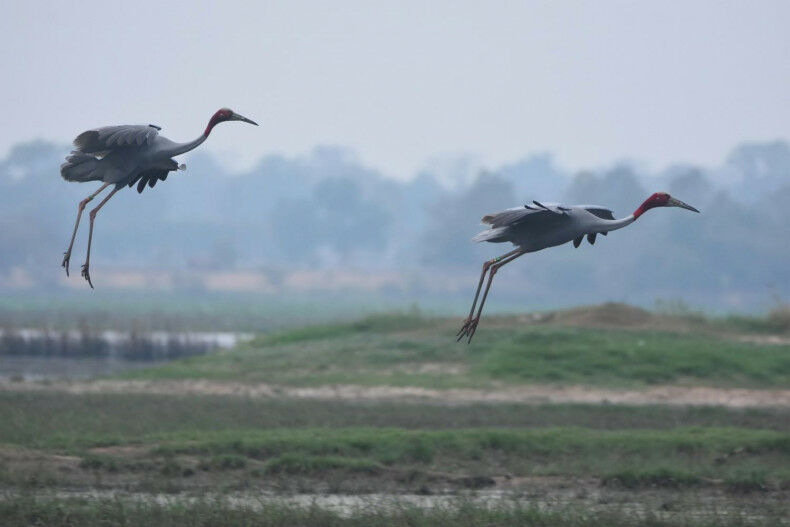Zoos in Thailand and Vietnam collaborate to protect endangered cranes

The Zoological Park Organization (ZPO) is joining forces with the Vietnam Zoos Association to increase the Eastern Sarus Crane population in Vietnam.
Through a Memorandum of Understanding (MoU), the collaboration will also involve the People’s Committee of Dong Thap Province in Vietnam and the International Crane Foundation.
Since 2009, ZPO has been reintroducing Eastern Sarus Cranes to Thailand by breeding and releasing them into the natural wetlands of Buriram province, reported Bangkok Post.
Attapon Srihayun, director-general of the ZPO, said…
“We are striving to bring them back from the brink of extinction into their natural habitat so they continue to fly in the skies.”
Attapon expressed gratitude to all those involved in the effort, including scientists and staff at the Department of National Park, Wildlife and Plant, Mahidol University, as well as local agencies, private sector workers, and people in Buriram.
With the Eastern Sarus Crane population in Vietnam still at risk of extinction, the MoU aims to replenish their numbers in Tram Chim National Park.
The partnership will involve breeding and transferring captive-reared juvenile Sarus Cranes from Nakhon Ratchasima Zoo for release in Vietnam. Additionally, it will focus on training staff, developing captive-rearing facilities, and establishing a release and monitoring system.
The Eastern Sarus Crane population in Vietnam is estimated to be between 1,000 and 1,500 individuals, making it one of the most important populations in Southeast Asia.
The species is considered to be regionally and globally threatened, with the main threats being the loss of habitat, hunting and poaching, and human disturbance.
The Vietnamese government has taken measures to protect the species, including the creation of a protected area in the Mekong Delta, and the implementation of a national action plan for the conservation of the species.
The ZPO is responsible for education, preservation and reproduction, and management of the zoo and for it to be a place for relaxation of general public.
Latest Thailand News
Follow The Thaiger on Google News:


























